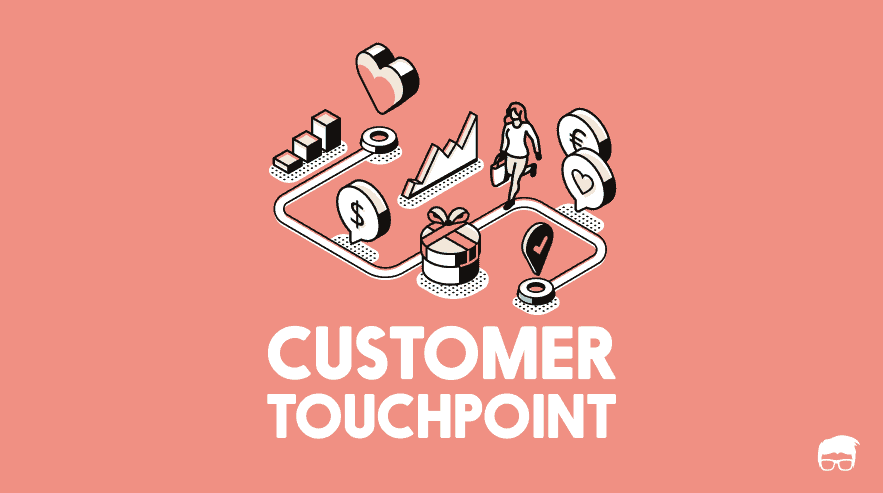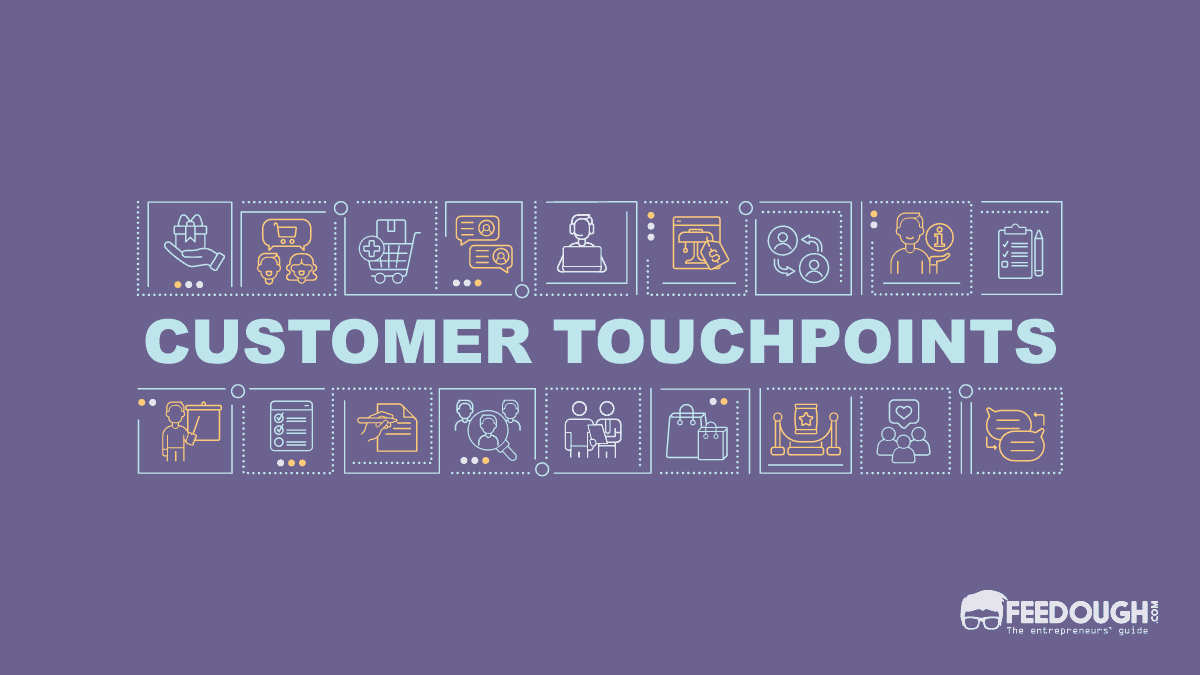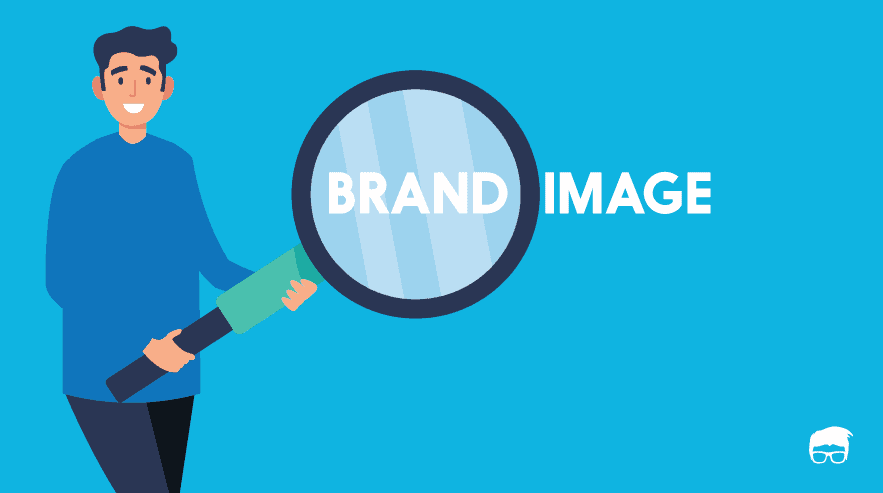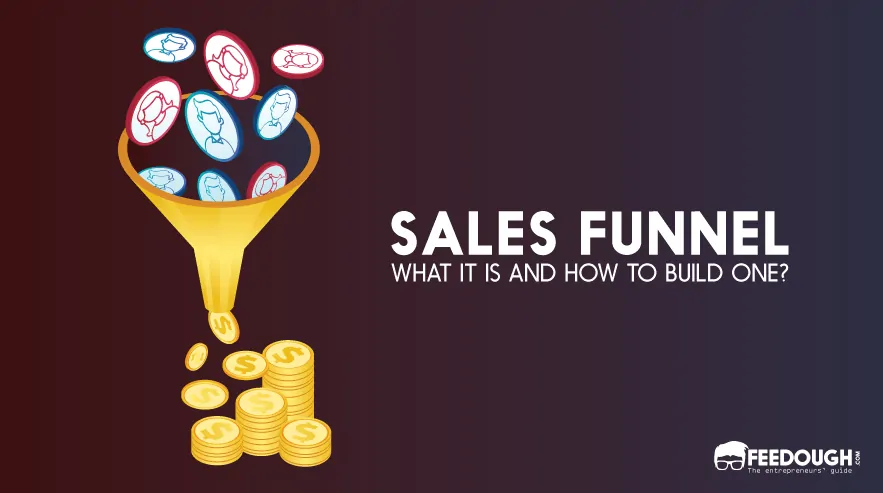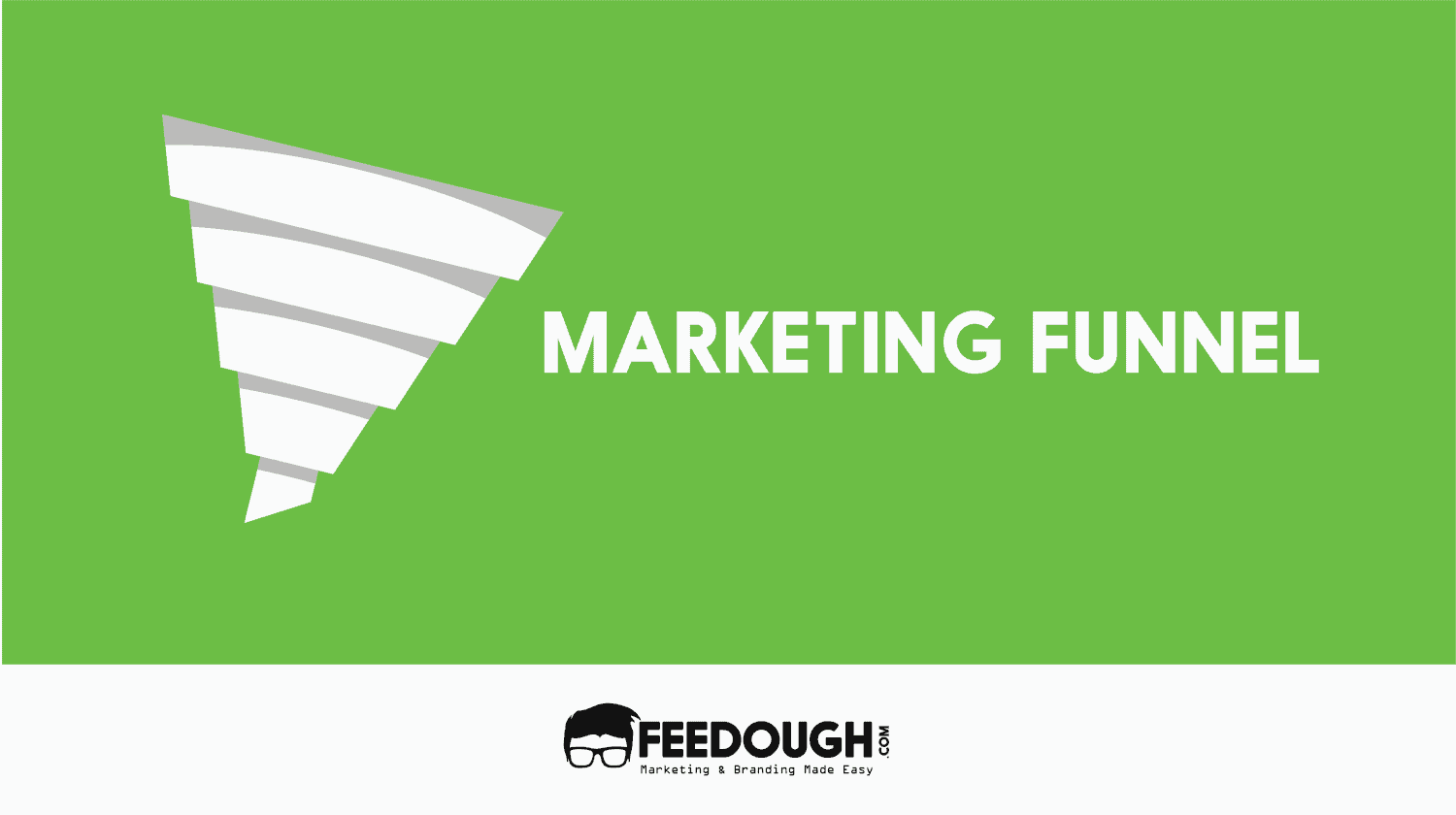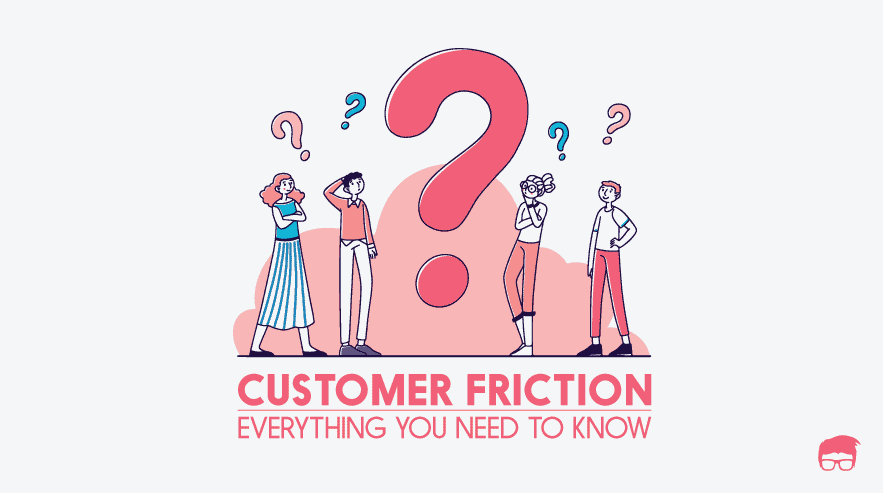Customers don’t go from hearing about a brand to becoming customers randomly.
There’s a process that starts right from a customer getting aware of the brand until they make a purchase. It’s the customer journey.
And when this journey is visually represented on a brand’s side, it looks like a funnel where –
- A lot of people hear about the brand in the first stage
- A few of them get interested in knowing more about the brand
- Even fewer of them actually consider purchasing the product or service
- And finally, a small percentage of people end up making a purchase.
This visual funnel is referred to as a marketing funnel. When all the brand’s efforts throughout this journey are made using digital marketing channels, it’s called a digital marketing funnel.
What Is A Digital Marketing Funnel?
A digital marketing funnel is a visual representation of the customer journey from discovering a brand online to purchasing online.
In simple terms, it is a series of steps or stages that a potential customer goes through when interacting with a brand’s digital marketing efforts. These steps are designed to guide the customer –
- get aware of the brand,
- show interest in the product or service,
- consider purchasing it, and finally,
- making a purchase.
For example, a customer X might come across a brand’s social media post (ad) and click on it, explore their website, add an item to the cart, and then complete the purchase. This entire journey can be mapped out in a digital marketing funnel.
While it’s a simple example, the funnel can also be complex.
For example, another customer, Y, might come across the same social media post, click on it, explore the website, but not make a purchase. However, they may subscribe to the brand’s newsletter and later receive an email with a discount code that prompts them to make a purchase. In this case, the digital marketing funnel would be slightly different for customer Y compared to customer X.
The goal of a digital marketing funnel is to guide potential customers through each stage and eventually convert them into paying customers.
Why Is Digital Marketing Funnel Important?
A digital marketing funnel is a map that helps businesses understand their customer’s journey and identify areas for improvement. It is essential to have a digital marketing funnel for the following reasons:
- Better understanding of customer behaviour: By mapping out the customer journey, businesses can gain insights into how customers interact with their brands online. This data can help them optimise their marketing efforts and provide a better user experience.
- Proper lead nurturing: A digital marketing funnel allows businesses to nurture leads at every stage of the journey. This way, the business can target the right messages at the right time and effectively move leads towards conversion.
- Optimises resource allocation: When businesses know which stage of the funnel needs improvement, they can allocate resources accordingly. This helps them save time and money by focusing on areas that need attention.
- Improved conversion rates: A well-optimised digital marketing funnel leads to better conversion rates. By understanding the customer journey, businesses can identify pain points and improve them to encourage more conversions.
Stages Of A Digital Marketing Funnel
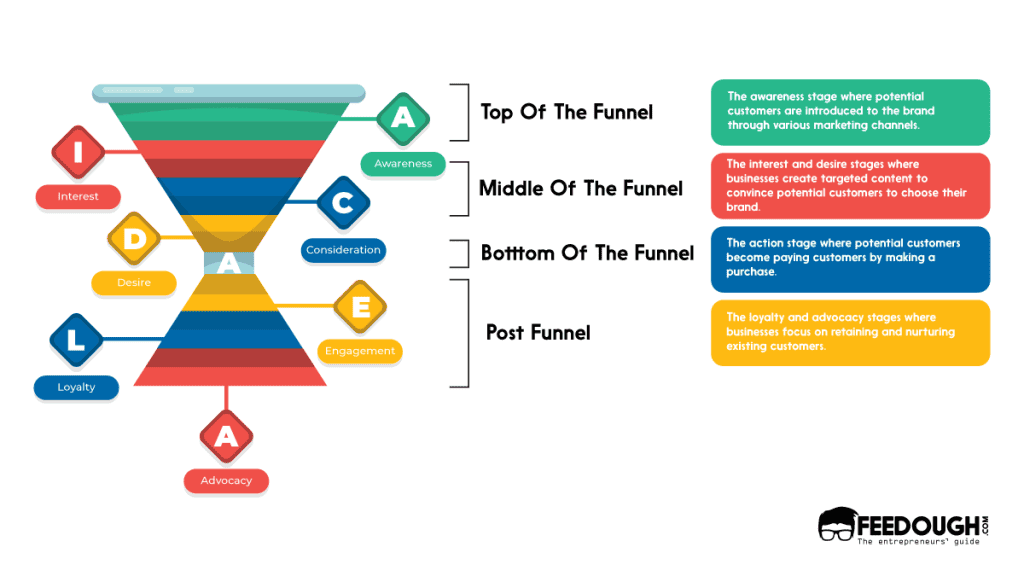
While there is no universally accepted digital marketing funnel model, most businesses follow a similar framework that includes the following stages:
- Awareness: This is the initial stage where potential customers become aware of a brand’s existence. From a customer’s point of view, this is the “discovery” phase where they first encounter a brand. This could be through various channels like social media, search engines, or online ads. At this stage, businesses focus on building brand awareness and establishing their online presence.
- Interest: After becoming aware of a brand, potential customers show interest in learning more about it or its products. This is where they start putting effort into researching and considering their options. They use channels like website content, reviews, and social media to gather information about the brand. Businesses provide more in-depth information about their brand and products to further pique the interest of these potential customers.
- Consideration: Once the questions and concerns of potential customers have been addressed, they move on to the consideration stage. At this point, they are actively comparing brands and products to make a decision. They are considering purchasing from the brand and want to know more about factors such as pricing, quality, and customer reviews. They need reasons why they should choose this brand over others. Businesses create targeted content, such as case studies, product demos and reviews, to convince potential customers to choose their brand.
- Desire: In this stage, potential customers have decided to purchase from the brand and are looking for specific details about the product or service, such as delivery options, warranties, and return policies. Website pages with detailed product information and clear calls to action are crucial in converting this interest into a desire for the product. Businesses highlight their unique selling points and create a sense of urgency to convert potential customers into paying ones.
- Action: The final stage is when potential customers become actual customers by purchasing the brand. It is important for businesses to make it easy for customers to complete the desired action, whether it’s making a purchase, signing up for a newsletter, or filling out a form.
There are other renditions of this model, such as the AIDA model—Attention, Interest, Desire, Action—or the newer RACE model—Reach, Act, Convert, Engage.
Whatever the case, the digital marketing funnel is known for its hourglass model. The funnel narrows down as customers move from awareness to action but then expands again for engagement, loyalty and advocacy.
- Engagement: Once customers have purchased, businesses want to encourage continued engagement. This is essentially to retain customers and turn them into repeat buyers. The focus shifts from acquiring new customers to keeping the existing ones satisfied. This can be achieved through personalised communication, loyalty programs, and exceptional customer service.
- Loyalty: The next stage is loyalty, where customers have formed a strong connection with the brand and consistently choose it over competitors. This stage focuses on building long-term customer relationships and turning them into brand advocates. Businesses can achieve this by providing a seamless customer experience, rewarding loyal customers, and consistently delivering high-quality products or services.
- Advocacy: The final stage is advocacy, where customers become enthusiastic supporters of the brand and actively promote it to others. This can be achieved through word-of-mouth marketing, user-generated content, and influencer partnerships. Advocates can also provide valuable feedback and improvement suggestions, helping businesses continually enhance their offerings.
To make things easier, brands often club these stages into three sections –
- Top of the Funnel (TOFU): The awareness stage where potential customers are introduced to the brand through various marketing channels.
- Middle of the Funnel (MOFU): The interest and desire stages where businesses create targeted content to convince potential customers to choose their brand.
- Bottom of the Funnel (BOFU): The action stage where potential customers become paying customers by purchasing.
- Post-Funnel (Pofu): The loyalty and advocacy stages where businesses focus on retaining and nurturing existing customers.
Top Of The Funnel
The top of the funnel is where –
- The customer is unaware of either the brand or the product it offers
- The business’s goal is to create awareness and grab potential customers’ attention
It is the first step in the customer journey, and it is crucial for businesses to make a good first impression – to tell customers the fact that –
- this brand sells products for this category, or
- they can get this product to solve this problem.
Both of these goals aim to make the customer aware of and interested in the brand.
At this stage, businesses use various marketing channels such as –
- Social media: platforms like Facebook, Twitter, Instagram, etc., to reach out to potential customers and create awareness about their brand and products.
- Blogs: Focusing on awareness-oriented topics that can attract potential customers and showcase the brand’s expertise in a particular area.
- SEO: Using keywords and optimising website content to appear on top of search engine results when potential customers are looking for relevant products or services.
- Advertising: Utilising paid ads on both social media and search engines to grab the attention of potential customers.
- Influencer marketing: Collaborating with popular influencers who have a strong following and can promote the brand and its products to their audience.
As businesses strive to drive more traffic and increase brand awareness, they also focus on building a strong brand image through consistent branding and messaging. This helps create a positive perception of the brand in the minds of potential customers, making it more likely for them to choose the brand over competitors when they are ready to make a purchase.
Middle Of The Funnel
The middle of the funnel is where –
- Potential customers have shown interest in the brand or product and have moved from being aware to considering a possible purchase.
- The business aims to nurture these leads and provide them with relevant information to help them make an informed decision.
At this stage, businesses focus on creating valuable content that addresses potential customer’s pain points and highlights the brand’s unique selling points. Some strategies used in the middle of the funnel include:
- Email marketing: Continuing to engage with potential customers through targeted emails that provide relevant information and offers related to their interests.
- Webinars or virtual events: Hosting online events to showcase products, features, and benefits while providing a platform for potential customers to ask questions and interact with the brand.
- Case studies and testimonials: Showcasing real-life examples of how the brand’s products or services have helped solve problems for existing customers.
- Remarketing ads: Utilising targeted ads on platforms like Google Ads or social media to retarget potential customers who have shown interest in the brand but have not yet purchased.
- Personalised content: Creating personalised content, such as personalised product recommendations or targeted landing pages, based on the interests and needs of potential customers.
The brand’s goal at this stage is to establish trust and credibility with potential customers, making them more likely to choose the brand over competitors when they are ready to purchase. It is crucial for businesses to continue nurturing leads in the middle of the funnel as it can greatly impact their decision-making process and ultimately lead to conversion and customer loyalty.
Bottom Of The Funnel
The bottom of the funnel is where –
- Potential customers have considered purchasing the brand’s products or services and are ready to decide.
- The business’s goal is to encourage a purchase from the customer.
At this stage, businesses create a sense of urgency and provide clear calls-to-action (CTAs) to prompt potential customers to take action.
Some strategies used at the bottom of the funnel include:
- Special deals and discounts: Creating time-sensitive offers or discounts to encourage customers to purchase sooner rather than later.
- Discount coupons: Providing discounts that can be used immediately to take advantage of limited-time offers.
- Free trials: Offering free trials or demos of the product or service to allow potential customers to try it out before making a purchase.
- Limited availability: Creating a sense of scarcity by limiting the availability of a particular product or service to create urgency and generate interest.
- Personalised product recommendations: Providing personalised product recommendations based on the customer’s interests and needs.
- Upsells and cross-sells: Encouraging customers to purchase additional products or services through upselling and cross-selling techniques.
- Social proof: Showcasing customer reviews, ratings, and testimonials to build trust and credibility in the brand and its products or services.
The bottom of the funnel is also crucial for businesses to gather customer feedback. This feedback can be used to improve the product or service, address any concerns or issues, and ultimately create a positive experience for the customer.
By effectively nurturing leads at each funnel stage, businesses can increase their chances of converting potential customers into loyal customers.
Post-Funnel (Pofu)
Post-funnel is where –
- Customers have already made a purchase and are now in the engagement and loyalty stage of the customer journey.
- The business aims to retain these customers, encourage repeat business, and turn them into brand advocates.
At this stage, businesses build strong customer relationships through personalised communication, exceptional customer service, and ongoing engagement. Some strategies used in the post-funnel include:
- Personalised email marketing: Continuing to engage with customers through personalised email campaigns that provide relevant information and offers based on their purchase history and interests.
- Customer loyalty programs: Rewarding customers for their repeat business by offering incentives, such as discounts or rewards, to encourage them to keep purchasing from the brand.
- Social media engagement: Encouraging customers to engage with the brand on social media through user-generated content, contests, and other interactive initiatives.
- Existing customer events: Host exclusive sales, webinars, or gatherings to engage with existing customers and reinforce the brand’s commitment to customer loyalty.
- Customer reviews and testimonials: Encouraging customers to share their experiences and reviews of the brand’s products or services to help attract new customers and build credibility.
- Referral programs: Incentivising customers to refer their friends and family to the brand by offering rewards, such as discounts or free products, for successful referrals.
The post-funnel is crucial for businesses to build strong customer relationships, increase loyalty, encourage repeat business, and boost word of mouth. By nurturing these relationships and providing exceptional customer service and engagement, businesses can create a loyal customer base that will continue to support the brand and even advocate for it to others.
Digital Marketing Funnel Vs Traditional Funnel
While traditional marketing funnels may have consisted of a linear process, with the customer moving from awareness to consideration and then decision, digital marketing funnels are much more fluid and dynamic.
With the rise of technology and social media, customers now have access to vast information at their fingertips. This has changed the way they interact with brands and make purchasing decisions.
In a digital marketing funnel, customers can enter at any stage and move back and forth between stages depending on their needs, preferences, and behaviours.
For example, in a traditional scenario, a customer may become aware of a brand through a TV commercial, consider their options by visiting the store and making a purchase decision at the point of sale. However, in a digital marketing funnel, a brand needs to learn how to market on Facebook, create content on Instagram, do SEO, and use data analytics to track customer behaviour online. This is because of a much more complex and multi-channel customer journey.
For example, the customer may become aware of a brand through social media and then visit the website to learn more about their products or services. They may then leave the website and do further research on review sites or ask for recommendations from friends before finally making a purchase decision.
This makes it imperative for businesses to learn about their customers’ digital behaviours and optimise their marketing strategies accordingly.
Aspect | Traditional Marketing Funnel | Digital Marketing Funnel |
|---|---|---|
Structure | Linear | Non-linear |
Customer Journey | Predictable, follows a set sequence | Dynamic, customers can enter at any stage |
Control | Brand-centric, controlled by the company | Customer-centric, driven by customer interactions |
Communication Channels | Limited (TV, Radio, Print, Direct Mail) | Diverse (Social Media, SEO, Email, PPC, Blogs) |
Feedback Loop | Slow, often delayed (e.g., surveys, sales data) | Instant, real-time analytics and feedback |
Personalization | Limited, one-size-fits-all approach | High, personalized content and targeted ads |
Measurement | Difficult, reliant on broad metrics | Precise, data-driven metrics and KPIs |
Engagement | One-way communication | Two-way communication, interactive engagement |
Flexibility | Low, campaigns are harder to change once started | High, campaigns can be adjusted in real-time |
Reach | Broad but often untargeted | Highly targeted based on demographics, behavior |
Cost Efficiency | High upfront costs, less efficient targeting | Variable costs, more efficient targeting |
Content | Static, long-form (e.g., TV ads, brochures) | Dynamic, varied formats (e.g., videos, infographics, blogs) |
Lead Nurturing | Limited touchpoints, long gaps between interactions | Continuous touchpoints, constant engagement |
Digital Marketing Funnel Example
Several companies have successfully utilised digital marketing funnels to increase their customer base and drive sales. Here is an example of a digital marketing funnel in action:
Netflix
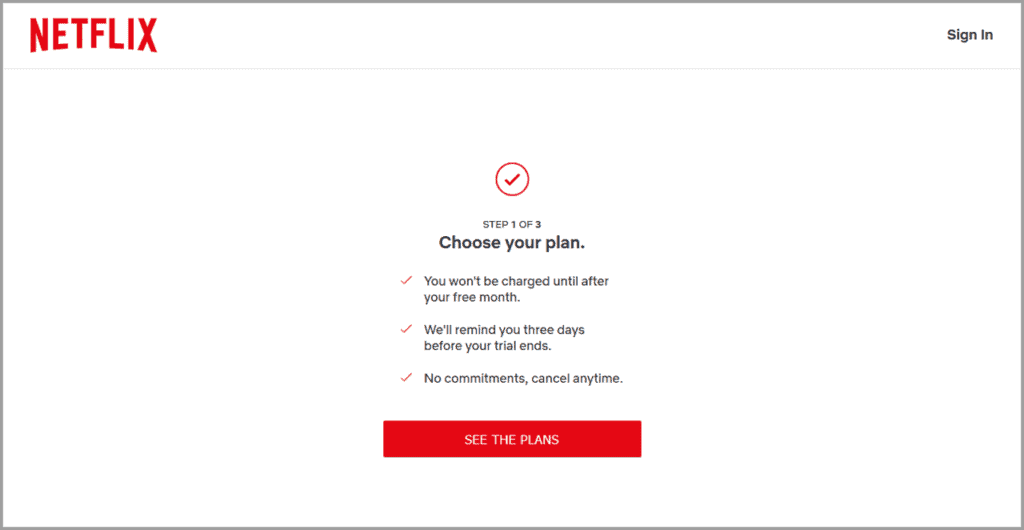
Netflix’s digital marketing funnel is a sophisticated and well-structured process designed to attract, engage, and convert potential customers into loyal subscribers. Here is a detailed breakdown of Netflix’s digital marketing funnel stages:
Awareness Stage
- Social Media Marketing: Netflix uses platforms like Twitter, Facebook, Instagram, TikTok, and YouTube to create buzz around its content. They post trailers, teasers, memes, and behind-the-scenes content to engage users and generate interest in upcoming shows and movies.
- Influencer Marketing: Collaborations with influencers and celebrities help Netflix reach wider audiences and create more personalised and relatable content.
- Content Marketing: Netflix’s blog “Tudum” publishes articles, interviews, and other engaging content related to the popular shows and movies on the platform. This helps attract potential subscribers by providing valuable information and entertainment.
Consideration Stage
- Free Trial Offers: Netflix attracts potential subscribers by offering a 30-day free trial, allowing users to experience the service without any initial cost.
- Email Marketing: Netflix sends personalised emails to potential subscribers who have shown interest but haven’t completed the sign-up process. These emails often highlight the benefits of the service and remind users of the free trial offer.
- Targeted Ads: Netflix uses targeted ads on various platforms to reach potential subscribers who have shown interest in similar content or competitors’ services.
Conversion Stage
- Simple Sign-Up Process: Netflix’s sign-up process is straightforward, with clear calls to action and minimal steps to reduce friction. This includes a landing page, plan introduction, plan pricing, account creation, and payment details.
- Multiple Subscription Plans: Netflix offers various subscription plans (Basic, Standard, Premium) to cater to different user needs and budgets, making it easier for users to find a plan that suits them
Retention Stage
- Content Personalisation: Netflix continuously updates its content library and uses AI algorithms to recommend shows and movies tailored to individual user preferences, ensuring users remain engaged with the platform.
- Multi-Device Compatibility: Netflix ensures a seamless viewing experience across multiple devices, including smartphones, tablets, smart TVs, and computers, allowing users to watch content anytime, anywhere.
Loyalty Stage
- Customer Feedback Integration: Netflix actively seeks and incorporates customer feedback to improve its service and content offerings, enhancing user satisfaction and loyalty
- Exclusive Content: By investing heavily in original content, Netflix keeps its subscribers hooked with unique and high-quality shows and movies that are not available on other platforms
- Community Building: Netflix fosters a sense of community among its users through social media engagement, interactive challenges, and direct responses to comments, which helps build a loyal fanbase
Advocacy Stage
- Word-of-Mouth Marketing: Satisfied customers often recommend Netflix to friends and family, contributing to organic growth and brand advocacy.
- Social Media Engagement: Netflix’s engaging and relatable social media content encourages users to share and promote the platform within their networks, further enhancing brand visibility and advocacy.
A startup consultant, digital marketer, traveller, and philomath. Aashish has worked with over 20 startups and successfully helped them ideate, raise money, and succeed. When not working, he can be found hiking, camping, and stargazing.
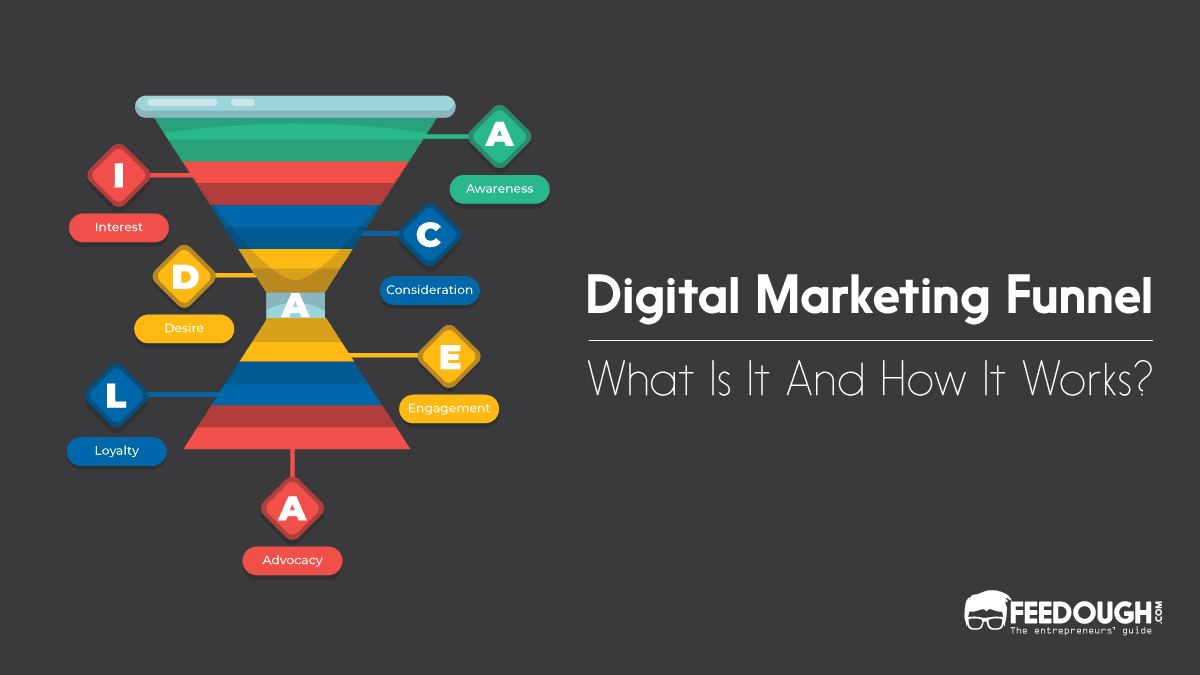
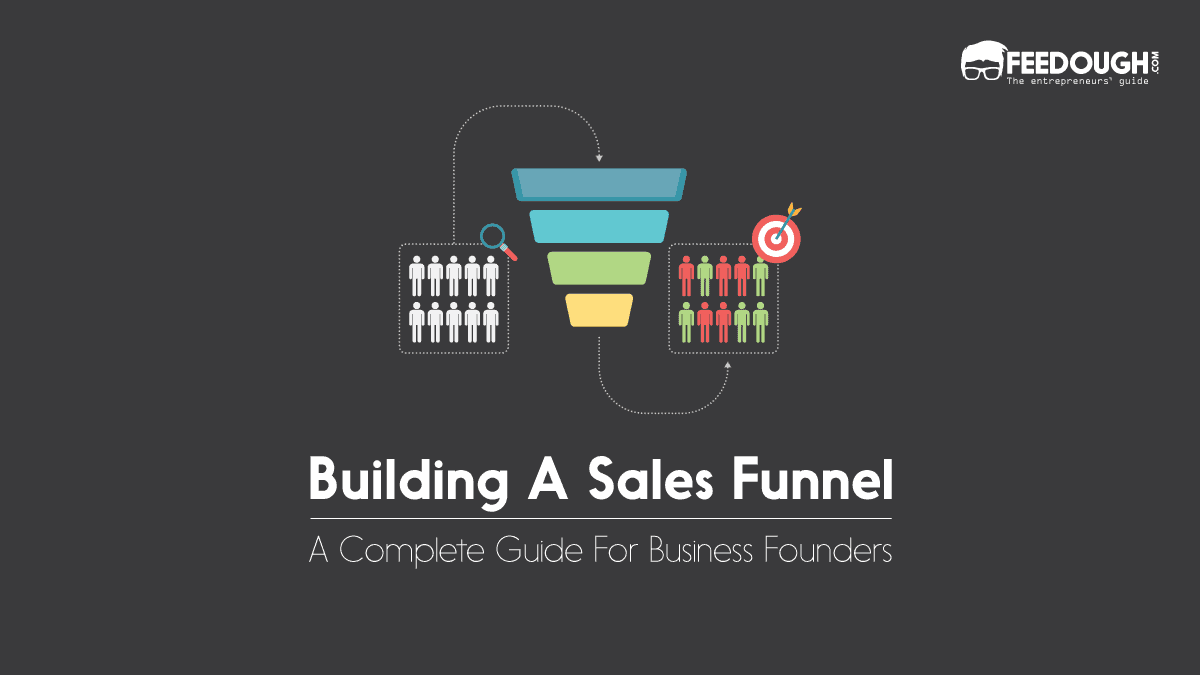
![What Is Demand Generation? [The Ultimate Guide] What Is Demand Generation?](https://www.feedough.com/wp-content/uploads/2019/05/DEMAND-GENERATION.webp)
